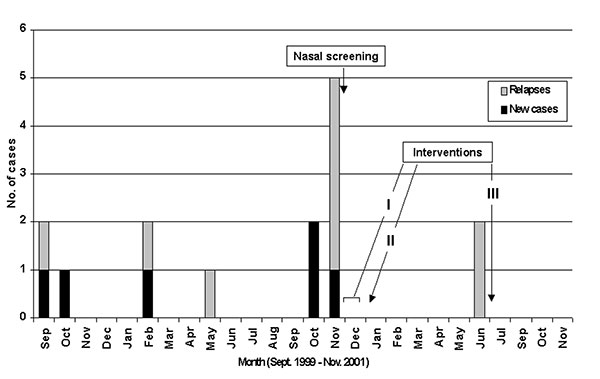Volume 10, Number 1—January 2004
Dispatch
Panton-Valentine Leukocidin and Staphyloccoccal Skin Infections in Schoolchildren1
Figure 1

Figure 1. Cases of skin infections among schoolchildren, Switzerland, September 1999–November 2001. I: Nasal mupirocin twice a day, chlorhexidine showers once a day for carriers of penicillin-resistant Staphylococcus aureus and their family members (5 days); alcoholic hand rubs in the classroom and at home (3–4 weeks). II: Repeated measures (5 days) in those still found to be carriers and in their family members. III: Repeated measures limited to the two relapsing children and their family members.
1This report was presented in part at the 42nd Interscience Conference on Antimicrobial Agents and Chemotherapy (ICAAC), September 27–30, 2002, San Diego, California.
Page created: December 21, 2010
Page updated: December 21, 2010
Page reviewed: December 21, 2010
The conclusions, findings, and opinions expressed by authors contributing to this journal do not necessarily reflect the official position of the U.S. Department of Health and Human Services, the Public Health Service, the Centers for Disease Control and Prevention, or the authors' affiliated institutions. Use of trade names is for identification only and does not imply endorsement by any of the groups named above.